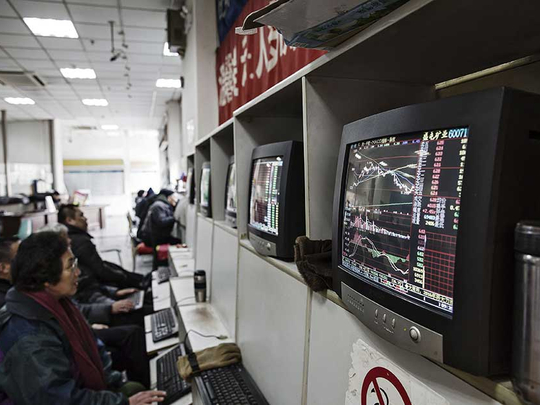
Dubai: A delay in rate hike by the US Federal Reserve has given a renewed lease of life to equities in developed and emerging markets (EM).
With the central banks at Jackson Hole and world leaders at the G20 meeting in China clamouring for growth amid weaker than expected jobs data, investors have muted expectations of a rate hike anytime soon, and they are placing their bets for a 25 basis points hike in December.
“You have got to be looking at equities between now and December. The US equity market looks exciting — earnings look set to improve through the second half of this year as dollar and oil price headwinds simultaneously roll off. Such earnings inflection points are good signposts for equity investing,” James Purcell, ultra high net worth investment strategist at UBS Wealth Management told Gulf News over email.
US equities, which hit their record highs last month, have generated between two and three times the returns of European, Japanese and emerging market equities since 2009. The US gauges have been continuing their gaining streak since 2009.
Even the emerging market equities are not left far behind.
EM equities, which have underperformed compared to developed markets, witnessed nine straight weeks of inflows across ETFs and mutual funds.
“One of the most powerful investment combinations is when value meets momentum — we’re seeing that in emerging markets right now. Few would doubt emerging markets have been “cheap” for a while on conventional metrics like price-to-earnings and price-to-book ratios, but now we have momentum,” Purcell from UBS Wealth Management said.
Fund manager Columbia Threadneedle has also upgraded its allocation to emerging market equities to neutral from dislike.
“This is a view supported by better growth, better earnings potential, cheap valuation, more favourable balances [both current and fiscal], scope for policy ease, stable or rising commodities and our expectation of only gentle dollar appreciation,” said Maya Bhandari, multi asset fund manager at Columbia Threadneedle Investments.
But fund managers are favouring select emerging market equities.
“Brazil has a new political paradigm that can drive a multi-year market-friendly story, India is seeing a macro-economic recovery and in China there is ample room for further fiscal stimulus measures that could lift multiples,” Purcell from UBS Wealth Management said. UBS has a regional overweight on China, India and Brazil.
Among all the EM equities, Indian equities appear to be in a “sweet spot.”
The benchmark Sensex index has gained more than 11 per cent so far in the year, compared to China’s 12 per cent losses. Foreigners bought $222 million (Dh815.2 million) of Indian equities last week, extending this year’s purchases to $6.1 billion, the most in Asia after Taiwan and South Korea.
With many structural changes in the economy, like the removal of subsidies on petrol, along with the passage of a uniform tax, fund managers have been turning bullish on the India story. This along with a substantial improvement in its current account position and healthy fiscal parameters have also been as plus points.
“There are signs of an acceleration in consumption spending, which is supported by rising income levels and growing young population,” said Irina Miklavchich, Head of EM equities, EMEA, Columbia Threadneedle.
“We favour consumer sector stocks in EM, particularly in those countries where the rebalancing has run its course, setting domestic consumption on a sustainable footing,” Miklavchich said.
Allocate to hedge funds to counter risk of rising equities, bonds
It’s of common knowledge that equities and bonds move in opposite direction.
But of late, all the asset classes have been moving in one direction, which is up, providing investors with less diversification tools.
“We would counter this trend by allocating to hedge funds — up to 20 per cent of a portfolio for certain risk profiles,” James Purcell, ultra high net worth investment strategist at UBS Wealth Management said.
In the current market environment, investors must make use of long or buy and short or sell positions at the same time to generate extra returns.
Generally, UBS advises to keep cash to low levels.
“We would advise keeping cash levels low — history tells us taking your investments off the table doesn’t normally pay off,” Purcell said.
By the way of an example, Purcell explains that a $100,000 investment in the S&P 500 25 years ago would be worth over $700,000 today, but if you had moved to cash and missed the 25 top trading days, you’d be sitting on less than $200,000 right now, he added.




